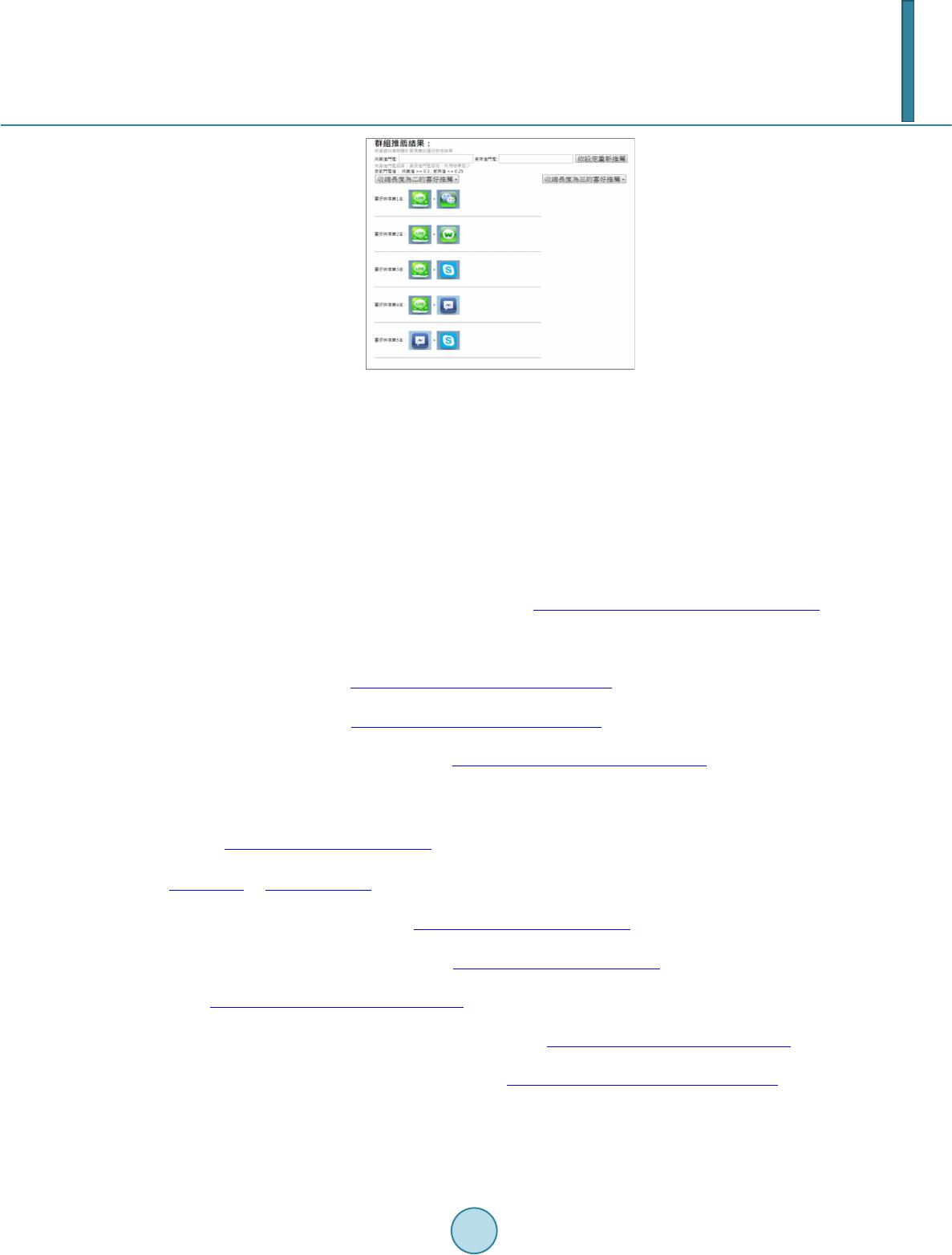
W.-F. Tung
Figure 3 . A group ranking sequence result.
vice of messaging app of mobile phones. This paper consists of the definitions, procedures, i mpleme ntatio n, and
experiment analysis, as well as system demonstrations of MCSP respectively. The section of MCSP implemen-
tation shows how MCSP conducts a decision process of determining group ranking sequence. The section of
experiment analysis is to verify the effects of MCSP. Finally, a prototype system can demonstrate input and
output of recommendation service of messaging app. However, this research still has some research limitations
of the number of sequences and the time complexity.
References
[1] Herrear, F., Herrera-Viedma, E., and Verdegay, J.L. (1996) Direct Approach in Group Decision Making Using Lin-
guistic OWA Operator s. Fuzzy Sets and Systems, 79, 175-19 0. http://dx.doi.org/10.1016/0165-0114(95 )00 162 -X
[2] Hevner, R.A., Salvatore, T.M. and Jinsoo, P. (2004) Design Science in Information Systems Research. MIS Quarterly,
28, 75-105.
[3] Hwang, C.L. and Lin, M.J. (1987) Group Decision Making Under Multiple Criteria: Methods and Applications. Sprin-
ger-Verlag, Berlin Heidelberg. http://dx.doi.org/10.1007/978-3-642-615 80-1
[4] Chen, Y.L. and Cheng, L.C. (2010) An Approach to Group Ranking Decisions in ADynamic Environment. Decision
Support Systems, 48, 622-634. http://dx.doi.org/10.1016/j.dss.2009.12.003
[5] Chen, Y.L. and Cheng, L.C. (2009) Mining Maximum Consensus Sequences From Group Ranking Data. European
Journal of Operational Research, 198 , 241-251. http://dx.doi.org/10.1016/j.ejor.2008.09.004
[6] Aaker, D.A. (1991) Managing Brand Equity. The Free Press, New York.
[7] Aaker, D.A. (1995) Building Strong Brand. The Press, New York.
[8] Aaker, D.A. (1996) Measuring Brand Personality across Products and Markets. California Management Review, 38 ,
102-120. http://dx.doi.org/10.2307/41165845
[9] Aaker, J.L. (1997) Dimension of Brand Personality. Journal of Marketing Research, 34, 347-356.
http://dx.doi.org/10. 2307 /31 51 897
[10] Basole, R.C. and Rouse, W.B. (2008) Complexity of Service Value Networks: Conceptualization and Empirical Inves-
tigation. IBM Systems Journal, 47, 53-68. http://dx.doi.org/10.1147/sj.471.0053
[11] Bitner, M.J., Ostrom, A.L. and Morgan, F.N. (2008) Service Blueprinting: A Practical Technique for Service Innova-
tion. California Management Review , 50, 66-94. http://dx.doi.org/10.2307/41166446
[12] Chesbrough, H. and Spohrer, J. (2006) A Research Manifesto for Services Science. Communications of the ACM, 49,
35-40. http://dx.doi.org/10.1145/1139922.1139945
[13] Cook, W.D., Golany, B., Kress, M., Penn, M. and Raviv, T. (2005) Optimal Allocation of Proposals to Reviewers to
Facilitate Effective Ranking. Management Science, 51, 655-661. http://dx.doi.org/10.1287/mnsc.1040.0290
[14] Eggert, A. and Ulaga, W. (2002) Customer Perceived Value: a Substitute for Satisfaction in Business Markets? The
Journal of Business & Industrial Marketing, 17, 107-118. http://dx.doi.org/10.1108/08858620210419754
[15] Frei, F.X. (2008 ) Th eFour Things a Service Business Must Get Right . Harvard Business Review, 86, 70-80.